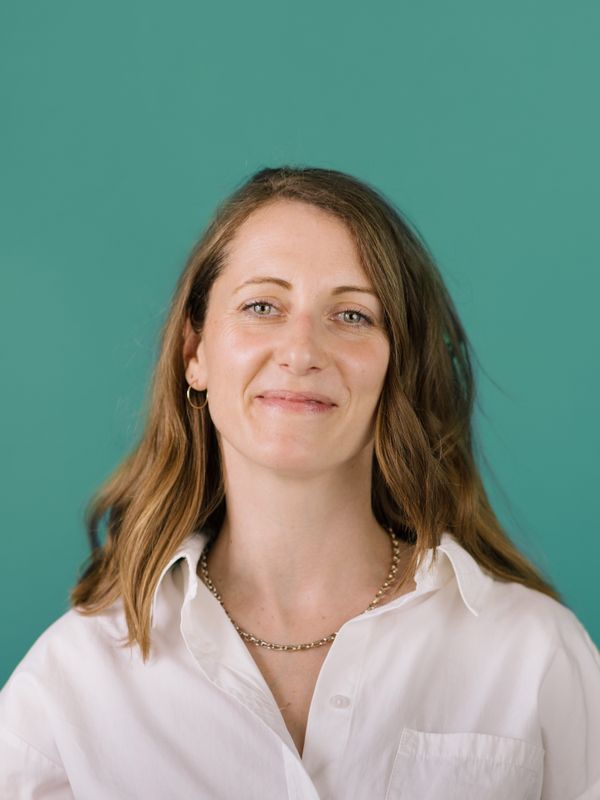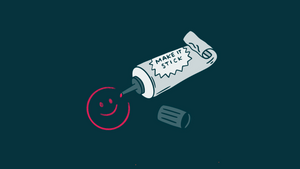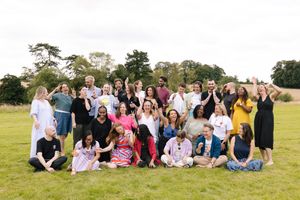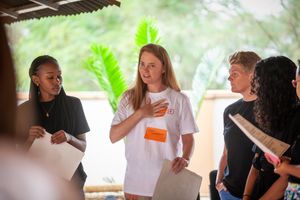
What happens when the CEO of one of the world’s oldest telecoms companies in the world announces “we need to start thinking like a start-up”?
When Telenor Group’s new President and CEO, Sigve Brekke, was appointed in 2015, he did exactly that. Thinking like a startup conjures the maxim of failing fast and breaking things. But with hundreds of millions of users and operations in 12 markets, even for the fastest growing mobile operator in the world, this is much easier said than done.
To hear more about how Telenor is embracing the startup mindset and ways of working, we spoke with Erica Gibson, VP of Product Management and User Research at Telenor Digital. Based in Telenor’s homeland Norway, Erica runs user research for the company, which is no mean feat considering there are over 178 million users globally. She also makes the time to head up the Ignite Incubator Program, Telenor’s accelerator for intrapreneurs.
Ideas from anyone, anywhere
To launch the programme, Telenor’s CEO invites any employee with a great idea for a digital product or service to apply for a chance to develop their idea into a testable prototype.

Successful pilots are then given resources and expert help from Erica and her team to bring their ideas to market. The aim is to develop ideas into products that can impact the societies in which Telenor operates, and that millions of their customers will use in their daily digital lives should it be successful.
The Ignite programme has so far been a huge success. Since its launch, several internal startups, innovative teams and new ways of working for Telenor have been developed and it’s now on its third iteration. But whilst it’s easy to focus on the ideas that made it to market, part of Ignite’s success has been adopting a healthy appetite for failure.
Erica shared her top insights on what they’ve learned about failure along the way:
1. Failure is an invalidated assumption
The Ignite Incubator is designed to shortcut the usual long build times for products and instead use lean methods to bring ideas in front of customers quickly. Teams begin the process of seeing if they have a problem worth solving, and by the end of the 3 months, they are starting to prototype their idea and put it in front of customers. They get a week of training on a topic followed by a month to try out what they’ve learned on their idea, and the very first of those topics is user research.
User research is based on the premise that customers’ true reactions to a product are far more genuine and valuable than what they’ll tell you they would do in an interview or focus group. The research asks is it a valid problem to be solved, then if so, are they the right team to solve it, and is their solution the right one? Only if it’s a yes to everything, does the team progress to prototyping and proving or disproving an assumption about how users will interact with a product is done by gathering data on their actual behaviour and reaction to that product.
Ignite teaches teams that decisions on whether to exit or double down on an idea are best made based on evidence and not hunches. It’s easy, in the early days of developing an idea, to become emotionally attached to it and for the classic cognitive bias of escalation of commitment to set in. By using a process and only developing a product further if and when evidence supports it, the emotional pain of failure is largely removed.
2. If you can see it, you can be it
That said, many companies talk about having a culture that supports failure, but to actually close down a project once resources have been deployed and partners are on board is still hard. Erica’s team was faced with a situation of shutting down a multi-stakeholder, high budget, high profile project which wasn’t going to be viable.
Once we got hold of the project and ran user research out in the field, we knew nobody was going to buy the product and made the decision to shut it down. That made a huge impact here. Companies pay a lot of lipservice to failing then don’t often put out examples or talk publicly about it. My team does.
3. Reframing failure as ‘not successful yet’
In the case of one of the Ignite teams from Bangladesh, the idea didn’t gather enough traction to be carried forward, it just wasn’t feasible. In a traditional telecom mindset, this would have been a failure, but the team’s user research and deep understanding of retail agent customers’ pain points have been picked up by the e-retail team in Bangladesh to create a gamification system to educate agents. If the idea had been totally written off as a failure, it would never have been repurposed in this way. By reframing the failed idea as useful insights to be deployed elsewhere in the business, Telenor has been able to use a mindset of ‘not successful yet’, to derive value from ideas which ostensibly failed.
NEXT PRACTICE: LOGGING FAILED IDEAS AS SEEDS FROM WHICH OTHER VENTURES CAN GROW
The Ignite programme has incorporated this principle of capturing the ideas that failed and insights into why that was the case: the startups that ‘fail’ from each batch of Ignite become seeds in the Telenor ‘Seedbank’. Failure is reframed as evidence-based insight and lessons are collected, stored and made available for anyone across the company to view. From the failure of one startup team, other products and ventures are encouraged to grow.
4. Failing well is a skill that can be learned
From the very first batch of Ignite, teams found the experience transformative, working at pace and picking up new skills. Erica tells us:
The individuals who make it on to the programme are the risk-takers and lifelong learners who are willing to join Ignite knowing they may not go back to their role, but will leave transformed.
Many go back into their departments and spread their new, agile ways of working into their respective teams, whilst others take what they’ve learned and apply it to new ventures. They are finding the lean method of building quickly, measuring well and iterating or exiting based on results a powerful discovery that can be transferred into other working practices.
The bottom line
Erica mused that perhaps her KPI should be how many people go on to start their own ventures, as a testament to the power of discovering new lean ways of working and what it’s possible to do with those skills. There’s a truth in that. The fast-paced and evidence-based startup method is a powerful thing to learn. When it’s supported well within organisations, it buffers employees from the potential shame and sometimes career-ending stigma of failure, by focusing on a process, not just an outcome, and by making sure valuable insights don’t go to waste.
Telenor has seen a strong annual performance this past year and the Ignite programme sits as the sharp end of a suite of company-wide transformation projects that are slowly turning the ship. We’ll check back after Ignite’s third batch to see how it unfolds and how seeds planted by the programme are playing out in the business. You can learn more about last year’s winners in this uplifting video meanwhile.
This article is part of Brink’s blog series interviewing business leaders who are creating an innovation-enabling culture in their organisation.
#innovation #startup #culture #failure #digital #Telenor #Brink





